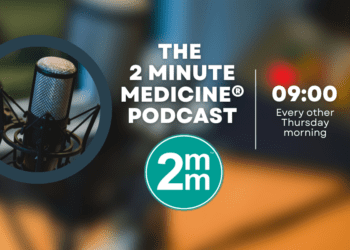Influenza vaccination linked to slight increased risk of subdeltoid bursitis
1. In this retrospective populated-based cohort study, the annual inactivated influenza intramuscular vaccination was associated with a small absolute increase in subdeltoid bursitis.
2. When compared to nurses, vaccination by medical assistants may be associated with increased risk of vaccination attributable bursitis.
Evidence Rating Level: 2 (Good)
Study Rundown: Vaccination induced bursitis has been previously described in case reports to be an adverse event of intramuscular vaccination. However, there has been no epidemiological data substantiating this association. The purpose of this study was to estimate the risk of subdeltoid bursitis following influenza vaccination among people who were vaccinated in the 2016-2017 influenza season. The results of this study demonstrated that that influenza vaccination was associated with an increase in subdeltoid bursitis. The association remained significant with varying interval timeframes attributable to vaccination or background population associated bursitis, certainty in diagnosis, symptom onset and additional vaccines to the same arm. No demographic difference, setting or arm was associated with an increased risk of bursitis however there were not enough cases to perform multivariable analyses. Of note, vaccination by medical assistants when compared to nurses, was more often found to be associated with vaccination attributable bursitis, but the absolute number of events in this comparison was low. The sample size of the vaccination cohort was adequate and the use of only vaccinated cases where each person served as their control contributed to reduced bias. Unfortunately, the lack of data on other healthcare settings such as community pharmacies, limited the generalizability of these results when compared to vaccinations done at other types of healthcare settings.
Click here to read the study, published today in Annals of Internal Medicine
Click to read an accompanying editorial in Annals in Internal Medicine
Relevant Reading: Don’t aim too high: Avoiding shoulder injury related to vaccine administration
In-Depth [retrospective cohort]: From a database of 10.2 million members from 7 U.S. health care organizations, this study of 2,943 ,93 influenza-vaccinated persons defined bursitis via ICD-10-CM diagnostic codes. In this study, the onset of symptoms in the first 3 days of injection were designated as attributable to the vaccine (the at-risk period) and the onset of symptoms between 30 to 60 days was attributed to the background incidence of bursitis (control period). Patients under the age of three were excluded from this study. Further, patients with a diagnosis of bursitis or a related shoulder condition prior to receiving the vaccination or those who had another vaccination within 180 days of being vaccinated with the inactivated influenza vaccination, were excluded. However, those receiving other vaccinations on the same day were not excluded from the study. The median age range of the at-risk cases were 57.5 years compared to 60 years in the control period. 68.8% were female in the at-risk cases, while 49% were female in the control cases. 16 cases were identified in the at-risk period and 51 cases were found in the control period. There was an increased risk of subdeltoid bursitis associated with the influenza vaccination based on the increased incidence rate ratio (3.24 [95% CI, 1.85 to 5.68]) which indicates an additional 7.78 (95% CI, 2.19 to 13.38) cases per 1 million vaccinated events. Sensitivity analysis varying the timeframe of the at-risk period, control period, certainty of onset of symptoms, certainty of diagnosis and exclusion of concurrent vaccines in the same arm demonstrated the same association. Patients vaccinated by medical assistants were more likely to have bursitis during the at-risk period (p = 0.052).
Image: PD
©2020 2 Minute Medicine, Inc. All rights reserved. No works may be reproduced without expressed written consent from 2 Minute Medicine, Inc. Inquire about licensing here. No article should be construed as medical advice and is not intended as such by the authors or by 2 Minute Medicine, Inc.







